SHEDDING LIGHT UPON THE MYSTERY OF LUMINOUS BIRDS - Part 1: OWLS AND FOWLS AND HERONS THAT GLOW!
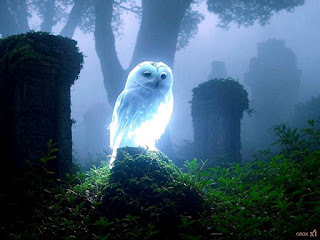 Isthis what a luminous or glowing owl would look like?
Isthis what a luminous or glowing owl would look like?THELUMINOUS OWL
A marvellous fowl is the luminous owl,It glitters and glisters and gleams.
It lights up the night in its shimmering flight,
A vision of wonder and dreams.
DrKarl Shuker – from my Star Steeds and Other Dreams poetry blog
Anomalousphenomena come into and go out of fashion very much like fashions themselves,and the concept of luminous birds, especially owls, is no exception. Throughoutancient and medieval history, it was very much a subject for discussion amongwriters and scholars. Moreover, there seems to have been a traditional,longstanding belief in many rural areas across the world but notably inBritain, continental Europe, North America, and Australia, that owls glow.Indeed, 'glimmer gowk' is included in Charles L. Hett's engrossingavian dictionary A Glossary of Popular,Local and Old-Fashioned Names of British Birds (1899) amongst the popularmonikers for any British owl.
Nevertheless, during the past century thisintriguing subject has slipped into virtual obscurity. Indeed, notwithstandingthe countless eyewitness reports and vast body of documentation relating toluminous birds in the past, certain modern-day skeptics breezily dismiss it asa mere myth, a credulous fragment of countryside folklore confined and dulyconsigned to bygone pre-scientific times, and thence long since discounted. Aswill now be shown, however, via the selection of cases documented in mytwo-part survey here on ShukerNature, the reality is very different. Something much more tangible than fanciful folkloreappears to be involved here – but what?
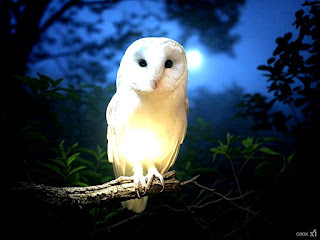 What a spectacular sight a glowing owl would be!
What a spectacular sight a glowing owl would be!One of the first coverages of thisintriguing phenomenon that I ever read was an article by Count Louis de Sibour entitled'The Existence of Luminous Birds', originally published by the periodical Knowledge (New Series) in September 1913,and subsequently collated by William R. Corliss in Incredible Life: A Handbook of Biological Mysteries (1981), one ofhis many invaluable compendia of scientific accounts documenting wildlifeanomalies and curiosities. In his article, de Sibour commented:
Few students delve deeply innatural history without encountering the topic of luminous birds, and the prosand cons of the subject are developed by the reader with a frequency that teststhe credulity of any superficial investigator.
Indisputably, it has exerted a greatfascination for any scientist willing enough to examine and take seriously themyriad mysteries of unnatural history; but before continuing with my own investigationof it here, I need to present a few definitions in order to prevent theall-too-common confusion of certain relevant scientific terms:
Incandescence is the emission of visiblelight from a substance heated to a high temperature. In contrast, luminescenceis the emission of visible light (and sometimes other types of electromagneticradiation too) from a substance as a result of any non-thermal energy-releasingprocess. If the luminescence ceases as soon as the energy source is removed,this is termed fluorescence; but if the luminescence persists (after-glow),this is termed phosphorescence and is the type of luminescence seemingly exhibitedby luminous aka glowing birds. Also requiring a definition here isbioluminescence – namely, the biochemical creation and emission of light by certaintypes of living organism (known from such forms as fireflies, glow-worms, andvarious deepsea fishes, plus some plants, fungi, and bacteria – but not birds…officially).
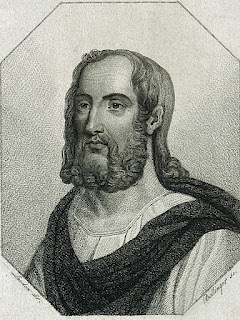 Plinythe Elder, stipple engraving by F.W. Bollinger (© wellcomeimages.org/Wikipedia–
CC BY 4.0 licence
)
Plinythe Elder, stipple engraving by F.W. Bollinger (© wellcomeimages.org/Wikipedia–
CC BY 4.0 licence
)
As noted by de Sibour in his article,luminous birds have a very considerable documented history, dating back atleast as far as the time of the celebrated Roman author/naturalist Pliny theElder (23/24 AD-79 AD). He mentioned one unnamed example briefly in Volume 3, Book10 of his encyclopaedic 10-volume, 37-book magnum opus Historia Mundi Naturalis (NaturalHistory of the World), stating: "In the Hercynian Forest, in Germany,we hear of a singular kind of bird, the feathers of which shine at night likefire". The Hercynian Forest was the huge ancient tract of dense woodlandthat in Roman times stretched across western Central Europe from northeasternFrance to the Carpathian Mountains but which exists today only in the form offragmented, relict expanses. It was said to be home to many wonders, includinga bona fide unicorn supposedly seen by none other than Julius Caesar (click here to read my ShukerNature articledealing with it).
Pliny's account of this mysteriousluminous bird (and much else too from his above-cited multi-volume tome) wasregurgitated two centuries later by Latin geographer/compiler Clarius Solinus,in Chapter 20 of his own major work, DeMirabilibus Mundi (On the Wonders ofthe World – also subsequently republished in a greatly revised editionentitled Polyhistor). Moving forwarda millennium, Pliny's report of a luminous tyoe of bird was again recycled inan extensive work. This time it was DeAnimalibus, written by the 13th-Century German monk and scholarAlbertus Magnus (1208-1280), and finally published in 1478 following theinvention of the printing press.
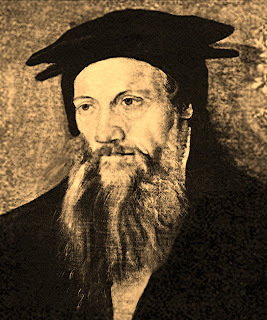 ConradGesner, by Tobias Stimmer, 1564 (public domain)
ConradGesner, by Tobias Stimmer, 1564 (public domain)
Moreover, the year 1555 saw thepublication of the very first treatise devoted totally to luminescence inanimals. Entitled De Lunariis, andwritten by Swiss naturalist/physician Conrad Gesner (1516-1565), it not onlyincluded reports of luminous birds and many other types of phosphorescent faunadating back to ancient times but also incorporated accounts of glowing plants(click here to read a ShukerNature article ofmine dealing with anomalous light-emitting flowers) and even luminous stones.
An even greater work on luminescentanimals appeared in 1647 – a mighty three-volume publication authored by Danishscientist Thomas Bartholin (1616-1680) entitled De Luce Animalium, of which its third volume was devoted entirely toglowing birds. Some of these were wholly mythical, such as the Egyptian phoenix,the incendiaria avis or incendiary bird (which set on fire any tree or houseupon which it perched), and the caladrius (according to Roman mythology, a snow-whitebird with healing powers), but allegedly real examples were also included.
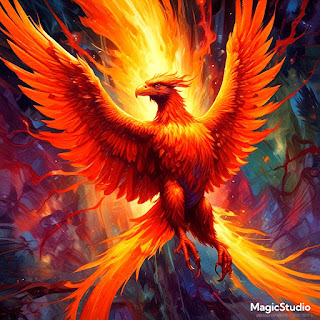 Egypt'scoruscating phoenix (image created by me using MagicStudio)
Egypt'scoruscating phoenix (image created by me using MagicStudio)
Worth mentioning is that only a few yearsearlier, in 1641, a number of glowing fowls had attracted so much attention ata market in Montpellier, France, that even the distinguished French nobleman Henride Bourbon (1552-1588), 2nd Prince of Condé, paid a special visit toobserve them there. One, a cockerel, was killed in order to examine it moreclosely, and according to Bartholin it: "shone on all parts of his bodywith a remarkably strong light". That same year, a glowing hen wasdisplayed at a market in Montebello, which "shone like a ball of whitefire", inspiring Bartholin to opine somewhat drily: "It is a pitythat the cock did not meet the hen; for we might then have obtained a breed ofincandescent fowls"!
More recently, England, the Pyrenees, andthe Vosges appear to be European regions from which accounts of luminous birds haveemerged – with the most commonly reported bird types being owls (particularlybarn owls) and herons. In some of these cases, they have been directlyidentifiable as birds, albeit ones that glow, usually white, paleyellowish-green, or reddish-yellow in colour; in certain other cases, themanner of their flight has identified them as birds.
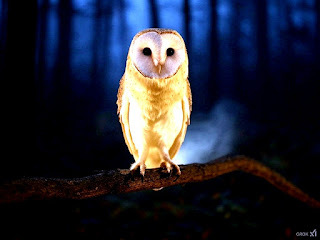 Howan owl glowing pale yellow may look
Howan owl glowing pale yellow may look
The 'flap' of luminous owl sightings thatoccurred during 1907-1908 near the hamlet of Twyford in Norfolk, easternEngland, is possibly the most famous, and last, to attract mainstream publicand scientific attention, and has been widely documented, albeit with manyvariations and inaccuracies. Happily, however, a comprehensive,scrupulously-researched article entitled 'The Luminous Owls of Norfolk',prepared by veteran Fortean chronicler David W. Clarke, was published in 1994within the inaugural volume of ForteanStudies, the short-lived scholarly journal of the longstanding Britishmysteries magazine Fortean Times, sothis is the source that I have consulted when producing my own coverage here.
Backin 1897, gamekeeper Fred Rolfe saw on several successive evenings near King's Lynnin Norfolk an eerie bright blue light flying overhead. Finally, he was able toshoot it with his gun, and after it plummeted to the ground he discovered thatit was a half-starved barn owl in very poor condition. The barn owl Tyto alba is a species well-known forits virtually pure-white plumage but which has not been formally confirmedscientifically to visibly glow. This incident remained uncirculated untilJanuary 1908, when Rolfe made its details public following numerous sightingsof one or more glowing owls having been reported close to Twyford and the nearbyNorfolk village of Foulsham during early and late 1907, as well as January 1908.
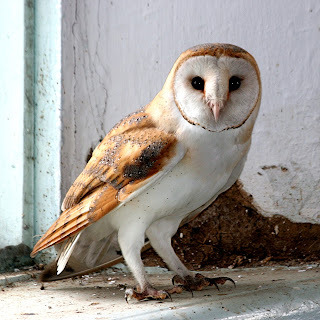 A normal,non-glowing barn owl (© Yu Moskalenko/Wikipedia –
CC BY-SA 4.0 licence
)
A normal,non-glowing barn owl (© Yu Moskalenko/Wikipedia –
CC BY-SA 4.0 licence
)
When making public the followinginformation regarding Norfolk's glowing owl(s) during the early 20thCentury, English naturalist Digby Piggott revealed that after visiting thespecific locations in question during December 1907, he had received itdirectly from Foulsham-residing fellow naturalist and principal eyewitness R.J.W.Purdy.
Purdy had informed Piggott that while inthe company of various other eyewitnesses, including his own son as well as aMr Spencer, he had experienced several sightings of a glowing owl in flight nearTwyford and Foulsham. The first sighting had taken place on 3 February 1907, withseveral more of what may (or may not) have been the same individual bird occurringduring December 1907 and January 1908. Likening it in overall appearance to alamp or lantern, Purdy recalled that on one occasion its luminescence was sopowerful that even the branches among which it had perched were illuminated,and that its irradiance was comparable to that of a bicycle lamp seen 300-400yards away!
Further observations of this remarkableowl by Purdy and other eyewitnesses suggested that its luminescence wasconfined to its breast, because its brightness was less powerful when it flewdirectly away from them, i.e. whenonly its back, wings, and tail were visible to them. Throughout the time periodspanning these sightings, this owl's luminescence showed no sign ofdiminishing. Purdy identified the bird as a short-eared owl Asio flammeus. During this same period, moreover,sightings of a comparable creature were also being reported on a nightly basis elsewherein Norfolk, at the Haddiscoe marshes nearly 30 miles southeast of Twyford, asdocumented at that time by renowned English ornithologist J.H. Gurney in the Britishperiodical The Zoologist. Pleaseconsult David Clarke's article for an extensive coverage of individual eyewitnessaccounts from this 'flap', as well as Vol. 8 (spanning the years 1904-1909) ofthe Transactions of the NorfolkNaturalists' Society, and Vol. 66 (1908) of The Zoologist.
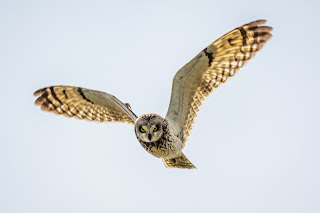 A short-earedowl in flight (© Stephan Sprinz/Wikipedia –
CC BY 4.0 licence
)
A short-earedowl in flight (© Stephan Sprinz/Wikipedia –
CC BY 4.0 licence
)
During the early 1920s, thisphosphorescence phenomenon received renewed media attention following someadditional sightings, but perhaps the most famous example from that time periodremained unreported for almost 30 years, until the eyewitness in question, JohnWelman, documented it in an article entitled 'Forbidden Valley, which waspublished by Blackwood's Magazine in September1948. Welman had been visiting a lake in Anatolia, Turkey, with a companionnamed Merrick when they beheld an incredible sight:
A luminous blob appeared on ahillside far away and wavered fitfully like a bicycle lamp seen at a distanceon a windy night…It swung round a clump of trees about 200 yards away, and camewinging, swiftly and silently, towards us. It was a bird. At least, it had theshape of a bird, and flew; but surely no mortal bird ever glowed, as this onedid, with the incandescence of a gas-mantle [a nitrate-soaked fabric bag that produces a bright white light when heated by a flame; used in lanterns, gas lamps, and some oil lamps]. It looked enormous, though I donot say it was; such sudden brilliance rushing headlong at one out of theambient dark, may have exaggerated its real size. That it flew like a bird andshone like a lamp were more certain impressions accepted by my startled mind.And when it came nearer, I saw that every feather of its plumage glittered withtiny points of light, a kind of frosted fire which, without the power todazzle, was bright enough to illuminate the branches of a tree through which itpassed. Its wide, luminous wings seemed to beat the air without disturbing it,for they made no sound whatever. I found myself gripping Merrick's arm andcowering down as it approached looming bigger and brighter every instant,until, seeming about to fly right in among us, it swerved aside and shot up inan arc to pass above our heads.
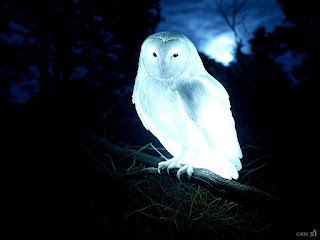 Aglowing barn owl as bright as a lantern!
Aglowing barn owl as bright as a lantern!
The barn owl is native to Turkey (andmuch else of the world too), and although Welman's above account provides scantdetails to assist in identifying the luminous bird taxonomically, the factsthat its wing beats made no sound (a famous characteristic of the barn owl whenseeking prey at night) and that although appearing enormous to the startledeyes of Welman it was nonetheless smallenough to be able to fly between the branches of a tree collectively suggestthat it may indeed have been a barn owl.
A number of notes on the subject ofglowing birds had been published in the RevueFrançais d'Ornithologie by French ornithologist Louis Ternier usinginformation supplied to him by Gurney regarding the Norfolk sightings, as wellas some eyewitness reports emanating from northern Spain, and seriousscientific attention had also been focused upon the subject by Dr W.L. McAteeof the U.S. Fish and Wildlife Service. By the mid-1940s, McAtee had accumulateda sizeable dossier of eyewitness reports appertaining to glowing birds asdiverse taxonomically as owls, night herons, and even Australian finches, whichhe published as an extensively-referenced article in the July 1947 issue of theAmerican Midland Naturalist.
Evidently, sceptics notwithstanding, thephenomenon of luminous birds is genuine, but how can it be explained? Fiveprincipal potential solutions have been suggested by amateur naturalists andprofessional scientists alike down through the ages, and these will bediscussed in Part 2 of this two-part review, to be posted here on ShukerNaturevery soon – don't miss it!
NB – All images of luminous owls includedhere were created by me using Grok.
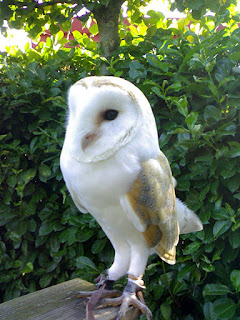 Evennormal, non-glowing barn owls can sometimes appear ghostly white in certainlights (© LeeGer/Wikipedia –
CC BY-SA 3.0 licence
)
Evennormal, non-glowing barn owls can sometimes appear ghostly white in certainlights (© LeeGer/Wikipedia –
CC BY-SA 3.0 licence
)
Karl Shuker's Blog
- Karl Shuker's profile
- 45 followers



